 Along the banks of the American River’s South Fork, in a valley native Nisenan people called ‘C ullumah ‘ or ‘beautiful valley,’ craftsman James Marshall discovered gold in 1848. Marshall’s discovery began the great California Gold Rush and fueled the West’s dramatic growth for decades.
Along the banks of the American River’s South Fork, in a valley native Nisenan people called ‘C ullumah ‘ or ‘beautiful valley,’ craftsman James Marshall discovered gold in 1848. Marshall’s discovery began the great California Gold Rush and fueled the West’s dramatic growth for decades.
Twenty-five Mount Madonna School (MMS) third and fourth graders learned this and more about California history during a recent two-day field trip to several Sacramento locations, as well as an excursion to the Sierra foothills where they explored the grounds of Sutter’s Mill and the Marshall Gold Discovery State Historic Park.
‘We had the chance to visit and explore history where it actually happened,’ commented Hamsa Heinrich, a longtime 3rd the grade teacher at MMS. ‘For students, it’s just this sort of experiential learning that makes all the abstract knowledge become more solid and real.’
Third graders Sadie Willoughby and Cecily Kelly said they had fun panning for gold, despite finding very little real gold.
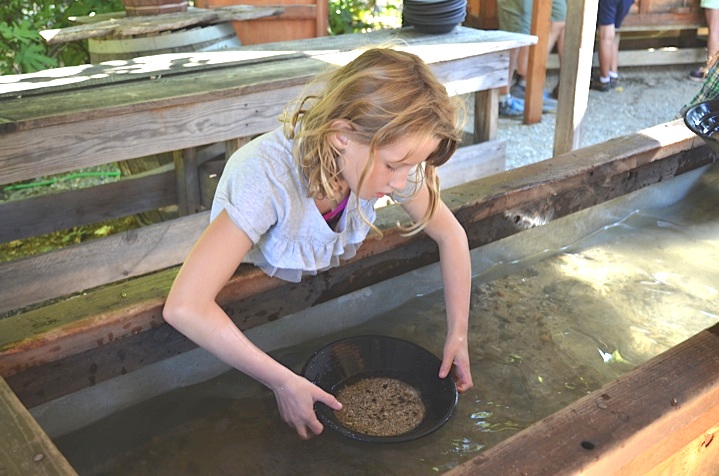 ‘Gold panning was hard work, especially in 1849,’ said Kelly. ‘The tubs we were panning were full of sand, rocks, fool’s gold or iron pyrite and some garnets. The reason people made gold worth money was because it was rare and easy to work.’
‘Gold panning was hard work, especially in 1849,’ said Kelly. ‘The tubs we were panning were full of sand, rocks, fool’s gold or iron pyrite and some garnets. The reason people made gold worth money was because it was rare and easy to work.’
Exploring the river and shoreline also offered a pleasant diversion, with some children opting to splash around in the shallows.
‘The water was ridiculously cold when I dunked my head underwater!’ shared third grader Jackson Hopkins. ‘This was my favorite part of the field trip.’
‘The river was big and wide,’ observed classmate Taylor Shaw. ‘It had a rock bank with some rocks so big you could stand on them with a friend! We liked splashing in the river and jumping from rock to rock.’
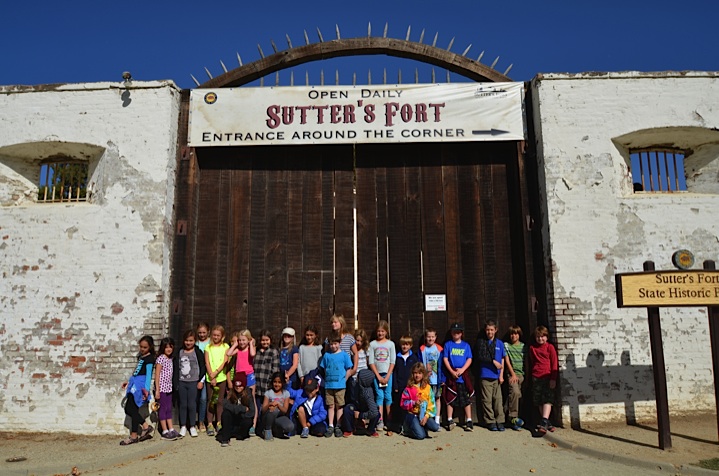 The students, their teachers and parent chaperones, spent their first day together in Sacramento visiting Sutter’s Fort, along with the State Indian, California State Railroad, and Sacramento History Museums.
The students, their teachers and parent chaperones, spent their first day together in Sacramento visiting Sutter’s Fort, along with the State Indian, California State Railroad, and Sacramento History Museums.
‘The history museum was very fun and interesting,’ shared third grader Nicole Brandt. ‘We learned a lot of things about the past, like how the gold miners looked for gold by using water cannons to blast the dirt off the mountainsides. This method was later outlawed because it damaged so much land and polluted the water.’
‘I learned about Sutter’s Fort and how old it was and how the pioneers made certain medicine from herbs,” shared fourth grader Ben Meltzer.
 “The mannequins in the train museum sort of freaked me out,’ added classmate Ben Pearson. ‘You couldn’t tell if they were real or not.”
“The mannequins in the train museum sort of freaked me out,’ added classmate Ben Pearson. ‘You couldn’t tell if they were real or not.”
‘The Indian museum had beautiful artifacts like their dance outfits made with beads and they even had the tiniest basket in the world,’ said fourth grader Grace Timan.
‘At both the State Indian Museum and the Sacramento History Museum we were fortunate to have enthusiastic docents,’ commented Heinrich. ‘They were captivating storytellers who wove the past into meaningful connections for all of us. Being able to visit historic sites, see real artifacts and learn from well-informed docents is a more concrete experience that brings history alive, and helps children to better understand a sequence of time and how events unfolded.’
 Third grader Maana Kolagotla said she learned that Sutter’s Fort, constructed in the early 1800s, was one of the first settlements where pioneers could stay when they arrived. Some of these pioneers went to work for the proprietor, John Sutter, while others made needed repairs or stocked up on supplies before moving on.
Third grader Maana Kolagotla said she learned that Sutter’s Fort, constructed in the early 1800s, was one of the first settlements where pioneers could stay when they arrived. Some of these pioneers went to work for the proprietor, John Sutter, while others made needed repairs or stocked up on supplies before moving on.
‘Visiting Sutter’s Fort gave me a feeling of what it would be like to live back in the 1800s,’ commented third grader Ronan Keith. ‘The jail was in a corner basement. It was a huge room made of bricks with no windows. Upstairs on the second floor were kegs to hold gun powder and rusty cannons pointing out the window. It was awesome.’
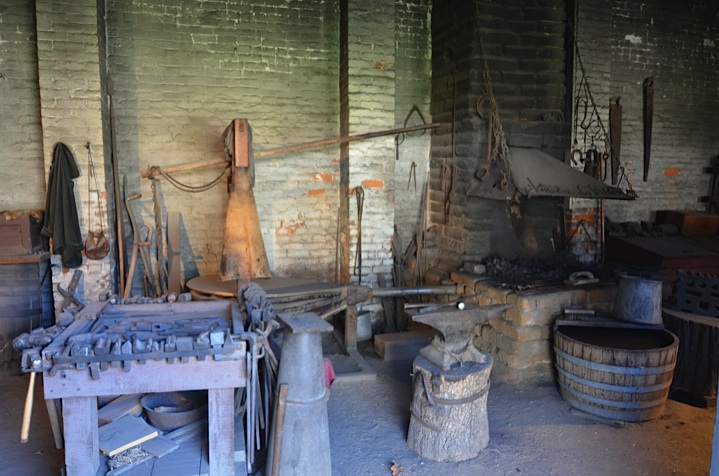 “Before I saw a covered wagon, I thought they would be much bigger and fatter,’ commented fourth grader Amirah Ibragimchayeva, ‘but they were actual skinny and not very long.”
“Before I saw a covered wagon, I thought they would be much bigger and fatter,’ commented fourth grader Amirah Ibragimchayeva, ‘but they were actual skinny and not very long.”
Heinrich explained that the biannual Sacramento trip grew out of a School tradition of travelling and learning together off campus. ‘There are so many ways to learn,’ she said, ‘and getting outside of the classroom is quite positive and productive — the opportunity for ‘concentrated learning’ really inspires everybody! When the kids return to the classroom the following week, they are ready to process their experiences and insights — and to share what they’ve learned with their school community and family through their writings, storytelling, and artworks.’
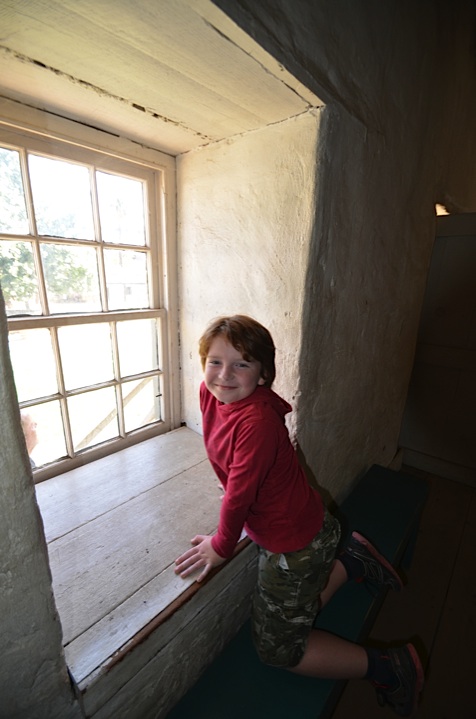 An overnight excursion to learn about California has been part of MMS’ elementary program — and Heinrich’s annual curriculum — for more than two decades. When she first began, Heinrich took her class each year to the Montara Lighthouse and other nearby sites to study North Coast geography and ecology; this field study was focused to meet specific aspects of the 3rd grade curricular standards. A number of years ago, the Sacramento trip, which focuses more on history – including western expansion, Native Americans, the railroads and gold rush — was designed and added to meet curricular standards for 4th graders.
An overnight excursion to learn about California has been part of MMS’ elementary program — and Heinrich’s annual curriculum — for more than two decades. When she first began, Heinrich took her class each year to the Montara Lighthouse and other nearby sites to study North Coast geography and ecology; this field study was focused to meet specific aspects of the 3rd grade curricular standards. A number of years ago, the Sacramento trip, which focuses more on history – including western expansion, Native Americans, the railroads and gold rush — was designed and added to meet curricular standards for 4th graders.
“It is so exciting to take students to places where history was made,’ commented fourth grade teacher Linda Pope. ‘There is so much amazing California history that we teach in both third and fourth grades. Nothing is better than giving your students hands-on experiences. Being able to show them the actual size of a covered wagon, and what few items settlers could bring with them is eye-opening for students living in our day and age.”
In preparing for this learning adventure, Pope was instrumental in researching and resurrecting the Sierra component.
 ‘It was important to me to have my students explore Coloma and Sutter’s Mill,’ she said. ‘This journey took us out of an urban setting and into the country where the students could get more of a feeling for pioneer life.’
‘It was important to me to have my students explore Coloma and Sutter’s Mill,’ she said. ‘This journey took us out of an urban setting and into the country where the students could get more of a feeling for pioneer life.’
In addition to the trip’s explicit curricular elements, there is the implicit learning that takes place surrounding issues of socialization and independence.
‘New situations,’ said Heinrich, ‘Everything from riding in a new carpool to being paired up with a different classmate at a museum, spending a night away at a youth hostel and helping to prepare the group’s meals, create opportunities to connect and expand our knowledge on many levels.’
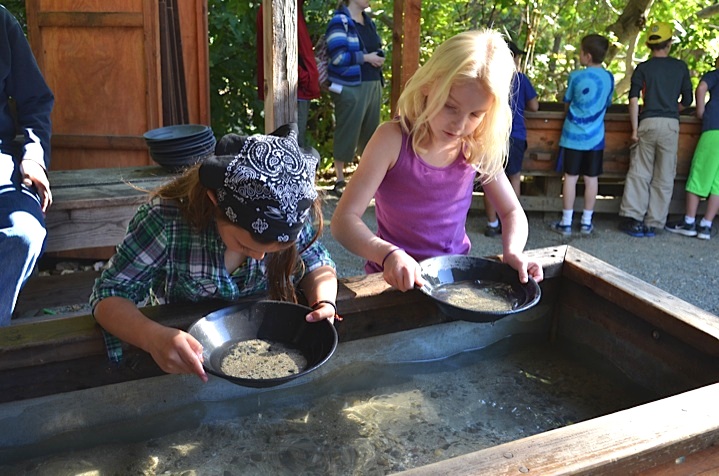 ‘It was a long drive to Sacramento,’ shared third grader Mariah Cohen. ‘It took over 3 hours and I had to leave my house at 5:45 in the morning! I liked playing ‘Go Fish’ with Nicole and Taylor. We talked about games and if we were nervous or happy or excited — or however we felt. We were all happy when we came to a rest stop and could run around on the grass. I had a lot of fun in our carpool even though I was a little nervous at first.’
‘It was a long drive to Sacramento,’ shared third grader Mariah Cohen. ‘It took over 3 hours and I had to leave my house at 5:45 in the morning! I liked playing ‘Go Fish’ with Nicole and Taylor. We talked about games and if we were nervous or happy or excited — or however we felt. We were all happy when we came to a rest stop and could run around on the grass. I had a lot of fun in our carpool even though I was a little nervous at first.’
‘The transformation of going into the unknown isn’t easy,’ observed Heinrich. ‘In fact, it can be scary, particularly for children. And when their worries are replaced by a positive experience, it builds confidence and character.’
####
Photos by Susan Pendry
Contact: Leigh Ann Clifton, Marketing & Communications,
Nestled among the redwoods on 355 mountaintop acres, Mount Madonna is a safe and nurturing college-preparatory school that supports students in becoming caring, self-aware and articulate critical thinkers, who are prepared to meet challenges with perseverance, creativity and integrity. The CAIS and WASC accredited program emphasizes academic excellence, creative self-expression and positive character development. Located on Summit Road between Gilroy and Watsonville.



